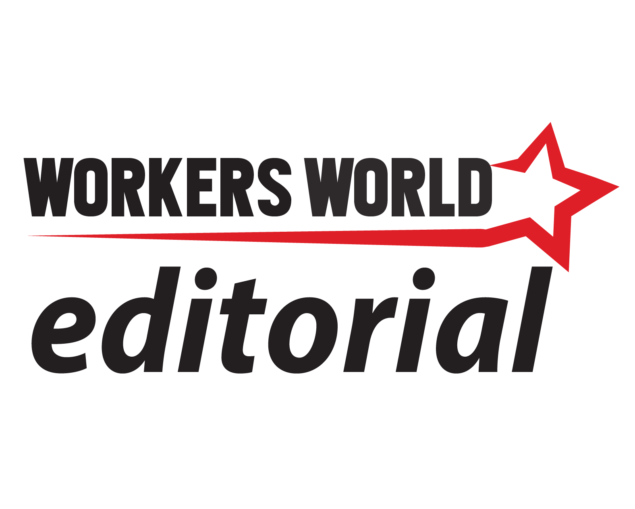In dire economic crisis, lessons from the most oppressed

The U.S. is in a historic, crushing economic crisis, accelerated by the COVID-19 pandemic. While the Bureau of Labor Statistics reported on May 21 the official unemployment rate was 14.7 percent, that same day Fortune magazine — a voice of the capitalist class — said the U.S. real unemployment rate was now 22.4 percent.
This is the highest U.S. unemployment rate since the 1930s’ Great Depression. As of May 21, 38.6 million people had filed for unemployment — more than the combined population of 21 states. One-fourth of the workers in Hawaii, Michigan and Nevada are out of a job. (bls.gov/bls/news.reles) And these statistics do not begin to factor in an estimated 2 million incarcerated workers, along with undocumented migrant workers.
Capitalists use these numbers to assess economic damage to their class and to make plans to save their profits.
Communists look at these numbers and know that it’s us and our family, friends and co-workers waiting in car lines 6 miles long for surplus food, trying to get emergency care from a doctor when health insurance was lost with the job, trying to keep from being evicted because there’s no money to pay the rent.
Communists look at the statistics and know the hidden facts: Most of the people losing jobs are already low-wage workers, because almost half of U.S. workers between 18 and 64 are employed in low-wage poverty jobs and paid median annual wages of only $18,000. (tinyurl.com/ya38q5tf)
Low-wage workers who are nationally oppressed — Indigenous, Black, Latinx, Asian-Pacific Islander — always receive even lower, poverty-level wages than poor whites, some groups as much as two times less. (tinyurl.com/yces3tuv) Racism rears its ugly head again in the fact that one-third of all U.S. Muslims live at or below the poverty line — the majority of U.S. Muslims are Black, Latinx or Asian. (tinyurl.com/yblpzncz)
Of 23 million low-wage workers, two-thirds are women. If statistics were kept for gender-nonconforming people, an even bigger number would be in the category of “low-wage women and gender-oppressed workers.” Women are typically paid 15 percent less than white male workers — with a greater gap for women of color. (tinyurl.com/y9xzcvvr)
According to the BLS, in 2019 only 19.3 percent of people with a disability were even employed.
Communists look at these facts and know who is suffering — and we look at our family, friends and co-workers and also see who is militantly organizing.
Because all over the U.S. low-wage and oppressed workers are rising — from sanitation workers to health salon workers, from nurses to meatpacking plant workers. They are being led by people of color, women, LGBTQ2+ people and people with disabilities — all rising up to fight for their lives.
Fighting for their lives is not a metaphor, but a literal truth as low-wage “essential” workers still on the job go toe-to-toe with their bosses in an attempt to get life-saving personal protection equipment and other health safeguards.
For workers out of a job, economic “help” from the U.S. or state governments is completely inadequate, if not deliberately withheld. As of May 15, according to One Fair Wage, 44 percent of people who applied for unemployment have either been denied or are still waiting to be approved.
Many millions of workers are now those who have “nothing to lose but their chains,” as the Communist Manifesto says. These are the “chains” of wage slavery.
Lessons from past struggles
Utmost in importance now is to remember the lessons of struggle that have been given to us from those who fought for centuries against U.S. colonialism, enslavement and capitalism.
First and foremost is solidarity — the need to forge bonds of sympathy, unity and strength — to fight each other’s battles as if each was our own.
The struggle against white supremacy is at the core of this solidarity — as it always has been — as the capitalist ruling class again marshals all its official and vigilante forces of neofascism to try to turn white workers against oppressed nationalities and other oppressed groupings.
The other key lesson that we’ve been given by the fighters before us is to aim and dream for the world we want — not the deal our oppressors offer. Now is the time to advance demands that take us closer to the world we dream of.
We say: Food is a right! A job is a right! A guaranteed more-than-living wage and/or income are rights! Health care is a right! Freedom from racism and all forms of oppression are rights! Freedom from incarceration, either in prisons or detention centers, and from deportation, is a right! And in our world, these rights are for every person — whether in the official “workforce” or not.
Every day during this economic pandemic crisis, the most oppressed are leading in struggle, and every day they are teaching us again an age-old lesson from Black freedom fighter Frederick Douglass: “Without struggle, there is no progress.”
Let us go forward to meet that challenge, wherever we are. Solidarity forever.

